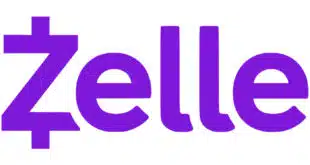Disbursements once were a staid business dominated by checks and ACH direct deposits. No more, thanks to the rise of the gig economy and new payout technology.
When they’re owed something, 21st Century consumers aren’t satisfied with waiting to get a check, and waiting again for it to clear. They want payment, and they want it now.
Technology and new services are developing rapidly to meet this growing demand for fast electronic payouts. That’s because banks, transaction processors, and fintechs are eyeing a business-to-consumer payment market with an estimated size of $10.7 trillion in 2018 on 3.55 billion transactions, according to Boston-based research firm Aite Group LLC.
The dollar value of disbursements to consumers over age 18 grew 78% from 2014 to 2018, Aite says. What’s more, the payout market’s growth likely is accelerating.
“Depending on whose data you’re looking at, this market could be growing as fast as 40%,” says Robert Clayton, vice president of Advanced Payment Solutions at Brookfield, Wis.-based Fiserv Inc., the core processor and tech-services provider for banks and credit unions that bought leading payment card processor First Data Corp. last year.
Fiserv’s payout services include Rapid Deposit, which provides instant settlements to merchants using the company’s Clover point-of-sale payment systems.
Fast Enough
Despite the growth of electronic B2C services, checks and direct deposits through the automated clearing house network still dominate the payout market. Based on a survey of 2,538 Americans, Aite estimates that in 2018 68% of consumers received funds disbursements via direct deposit, and 49% via check.
While direct deposits are faster than getting a check and waiting for it to clear after deposit, they’re often pegged to predetermined schedules. Consumers and companies increasingly are looking at a growing menu of payout alternatives with more flexible options.
These options include everything from the Real Time Payments (RTP) service from The Clearing House Payments Co. to the so-called push-payment services from Visa Inc. and Mastercard Inc., Visa Direct and Mastercard Send. Then there is Zelle from bank-owned Early Warning Services LLC, PayPal Holdings Inc., and various offerings from processors and fintechs.
There’s plenty of room for growth. Fewer than 20% of consumers say they have received payouts through general-purpose payment cards. And what Aite calls “alias-based” payout alternatives, a category that includes services such as PayPal or Zelle that can make use of phone numbers or email addresses to route payments, came in at 29% and 3%, respectively.
Plus, the ACH is getting faster, making it a stronger player in the B2C payout market. The Federal Reserve in December approved a third daily window for same-day processing, which means the ACH in March 2021 will have achieved its goal of three daily settlement windows.
That might not be instant, but the ACH alternatives can be fast enough for many businesses, depending on their particular needs, and cheaper than many options.
Who’s the Boss?
With technology and opportunities rapidly changing, a host of established payments companies and well-known and not-so-well-known fintechs are looking for a slice of the payout pie.
In addition to the aforementioned providers, players in the space include ACI Worldwide, Checkbook.io, Dwolla, Fiserv rival Fidelity National Information Services (FIS), Finix, Ingo Money, Marqeta, Sipree, Stripe, TabaPay, TransCard, Vela Payments, and Western Union, says a January Aite report focusing on the market’s vendors. There’s also room for emerging niche providers such as Alacriti, according to Aite.
All these providers think they can meet a growing consumer and business demand. “People want their funds immediately,” says Thomas Spataro, U.S. treasurer for Computershare Ltd., an Australian provider of shareholder and administrative services for companies and banks that has a large U.S. operation based in Canton, Mass. Computershare uses The Clearing House’s RTP network for some of its payouts to shareholders.
The most prominent niche in the payout sector is the gig, or on-demand, economy—think Uber, Lyft, deliveries, and all manner of services performed by people who work for themselves, not a company.
Young adults, whether by choice or because some companies are averse to hiring full-time workers, are a major driver of the gig economy. By some estimates, freelancers now account for about one-third of the U.S. workforce, according to Aite.
In addition to its high profile, the gig economy is the volume leader in the payout market. Aite estimates disbursements to gig workers, freelancers, and independent contractors totaled $3.26 trillion in 2018 through nearly 670 million transactions. The gig economy’s dollar value and transaction count grew 114% and 53% from 2014 to 2018.
“We’re going to continue to see growth there, especially with Millennials,” says Aite senior analyst Talie Baker. “More and more people are wanting to be their own boss instead of working for a corporation.”
A spokesperson for San Francisco-based Uber Technologies Inc., the leading ride-share provider and arguably the face of the gig economy, did not respond to a Digital Transactions request for comment.
‘Long Story Short’
Other large payout segments include government with its tax refunds and assistance programs, investment and insurance disbursements, payments by merchants to consumers in their loyalty programs, and payments generated through marketplaces such as Amazon and eBay, according to a February 2019 Aite report.
Even the distribution of gambling winnings is getting in on the payout action. “We’re seeing a lot more of this in the online space as e-gaming and sports are becoming more legitimatized,” says Fiserv’s Clayton (“The Sporting Chance,” July 2018).
Bill Sheley, a Visa senior vice president and global head of Visa Direct, says in an email message that “the on-demand economy is changing consumer and business expectations across industries, and there is a lot of potential in translating real-time payment technology to those verticals. Visa Direct has already been applied to over 30 use cases to meet these changing expectations, both in established and new or emerging verticals.”
Visa Direct and Mastercard Send both rely on a technique called the original credit transaction, which the networks first developed to handle refunds to customers by reversing the usual flow of funds so money moved from the store to a cardholder account.
According to a Mastercard spokesperson, the most common use cases for Mastercard Send are wage disbursements and early access to earned wages for hourly and gig/freelance workers, insurance claims payouts, person-to-person payment cash-outs, health-care and loan disbursements, and rapid settlement for merchants.
Some firms in industries where demand for workers, and turnover, is high are looking at real-time payout services to aid in employee retention. With newer payout services, workers can be paid before their scheduled paycheck date, sometimes even at the end of a shift.
That can help with retention in industries such as quick-service restaurants and retailing, according to Steve Ledford, product executive for The RTP Network at New York City-based The Clearing House.
The Clearing House reported in December that Rochester, N.Y.-based Paychex Inc., which provides payroll and human-resources services to small and mid-size companies, would be using RTP for some use cases. “This is a way of holding on to employees,” says Ledford.
RTP, which uses money-movement technology from Mastercard’s Vocalink subsidiary, launched in late 2017 with a handful of clients using it as a business-to-business payment service. But financial institutions and companies continually are coming up with new use cases, including B2C payments, according to Ledford.
In addition to gig-economy payments, RTP is making its way into so-called digital-wallet transfers. For example, users of PayPal or its Venmo P2P payment service can now extract money from their digital wallets through transactions that use RTP rails.
In all, RTP over its full array of use cases recently has been growing about 20% month-on-month, according to Ledford. “We’re having millions of transactions a month,” he says.
Computershare, the investor-services firm, has replaced some of its wire and other daily money-movement transactions with RTP. It also has used Zelle and PayPal for various payouts, such as class-action award distributions to shareholders.
Ten years ago, 90% of such distributions were made by check, according to Spataro. “Long story short, now it’s changing considerably,” he says.
‘A Quantum Leap’
The insurance industry is adding electronic payout options for claims, but it still has a long way to go. In 2018, 65% of consumers who received a property-and-casualty insurance claim disbursement were paid by check, and another 20% by direct deposit, according to an October 2019 Aite report. Only 5% or fewer of claimants received payouts via each of several other electronic forms.
Old-fashioned float through checks is a major reason why electronic payouts haven’t yet made much headway in the insurance business, according to Jay Sarzen, senior analyst, property and casualty, at Aite.
“If you’re an insurance carrier, a property-and-casualty insurance carrier, you’ve got a lot of incentive in a low interest-rate environment to hang on to your money as a long as you can,” he says.
Then there is insurers’ high comfort level with check-based reconciliation and auditing processes, he adds. Still another reason is that insurers have plowed most of their budgets for operational improvements into more upstream processes such as underwriting and claims adjustments, not the actual disbursement of an approved claim payment.
“Property-casualty insurance carriers are not necessarily looking to innovate on, if you will, the last step,” he says.
Nonetheless, the insurance industry is transitioning into electronic payouts, the first stop being the ACH.
“The bottom line is that with insurance carriers, a lot of them have moved to ACH payments,” says Sarzen. “For them, that represents a quantum leap over a check … to them, that is an instant payment.”
Also gaining traction are push payments to debit accounts, the types of payment available through Visa Direct and Mastercard Send, according to Sarzen. In that regard, Sheley says Visa is working with a number of insurance companies and their vendors globally to integrate Visa Direct into their claims-payment processes.
In the U.S., these companies include Erie Insurance in partnership with PNC Bank, and Invenger Technologies in implementing real-time disbursements for American Family.
“We have seen significant growth in insurance payouts, which is often thought of as a legacy industry,” says Sheley.
Off the Radar
Also ripe for further payout penetration are online marketplaces for the sale of personal goods and services as well as vacation rentals of furnished houses or apartments as alternatives to hotels. PayPal, of course, is a huge player in this niche, and Airbnb is the reigning king of rentals.
Aite valued this total market at $1.07 trillion in 2018—$823.7 billion for rentals and $244.9 billion for personal goods, with the rental part alone doubling in value since 2014.
“Marketplaces, you’re going to continue to see that grow,” says Baker. “People are just trying to come together to try to sell products and services.”
Another projected growth market is payouts from retailers to consumers for a number of different purposes, including brand and store incentives and loyalty-program rewards, store credits, rebates, product evaluations, and travel reimbursements. Aite valued that market at $248.2 billion in 2018.
Government payouts—state and federal tax refunds and aid—are the second-biggest of the overall categories ranked by Aite, valued at $2.7 trillion in 2018. But with growth of 48% over four years—certainly not bad—the public sector’s increase in electronic distribution was among the lowest among Aite’s groupings.
Companies in the B2C payout space are busily promoting their services, but their marketing efforts are largely off consumers’ radar.
“Mastercard Send is actively working with a wide range of partners, including FIs [financial institutions], PSPs [payment service providers], acquirer[s] and processors, fintechs and merchants to broaden our distribution,” the Mastercard spokesperson says by email. “We are also constantly enabling new use cases as instant push to card payment becomes more popular with consumers and small businesses.”
‘Struck Dumb’
While the opportunities in B2C payouts remain wide open, what’s not as clear is how providers will make money in the long term as payout services grow and mature. Important top- and bottom-line issues have to be resolved, including the speed and pricing of services.
“The tradeoff here is there’s instant and there’s cheap,” says Fiserv’s Clayton.
That said, Fiserv wouldn’t be in the payout business if it didn’t believe it could make money, according to Clayton. He expects some “high-volume, high-profile” scenarios to result in price compression, but such scenarios can be offset if a provider can sell auxiliary, higher-margin services, he says.
What’s more, financial institutions need to assess if and how B2C payout services might affect revenues from their other payment services. One lucrative income stream banks try especially hard to protect is the interchange they get from credit card transactions.
“There will be a point of arbitrage that will be kind of interesting to watch play out,” Clayton says.
Regarding revenues, Aite’s consumer survey, commissioned by Ingo Money, uncovered one hopeful sign that might prove to be the envy of person-to-person payment providers, whose customers are notoriously disinclined to pay fees.
Among 230 respondents who had received a property-and-casualty claim disbursement within the preceding 12 months and would select an instant-payment option if available, 58% said they would be willing to pay a fee, and another 18% said they might. Only 24% said they would not pay.
What’s more, a substantial minority, 37%, of respondents who replied to a question about how much they would pay to get an instant insurance payout of $1,000 said they would fork over $50 or more.
Analyst Sarzen says he was “struck dumb” by that number. “Maybe 37% of respondents are living on the edge that much,” he says.
Providers can only hope that such receptiveness to fees can be nurtured. In the meantime, they’re planting seeds all over the electronic payouts market.
“As new potential use cases for Visa Direct continue to come to light, we anticipate the business to grow steadily throughout fiscal year 2020,” says Sheley. “Given that globally today 83% of transactions are still in cash, paper, or other inefficient forms of payment, the opportunities for push-payment technology are great.”





